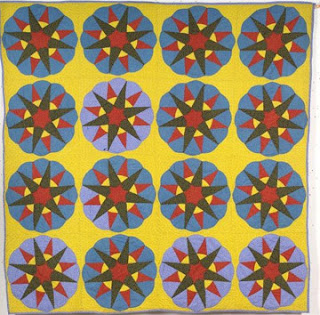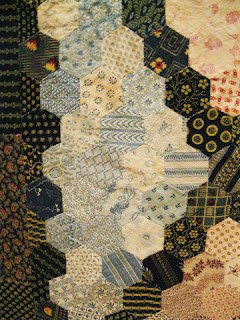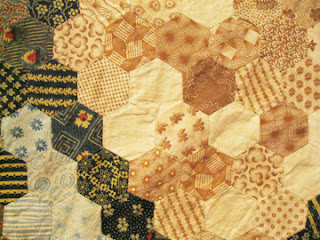The November/December issue of McCall's Quilting has three ads for Civil War reproduction prints!
I think mine is the best.
Click here to see more about this Christmas issue:
My fabric will be shipped to quilt shops in January, but the precuts should be out during the holiday season.
The ad has a sneak preview of the project pattern that shops can offer with the fabric.
1862 Battle Hymn
by Barbara Brackman and Susan Stiff
The pattern is a variation on a design known as Jacob's Ladder that was also called Underground Railroad by Ruth Finley in her 1929 book. We added three Bella Solids to the project in red, ivory and brown for some kick.
The block's a simple nine-patch that can be shaded and set in many ways...
Antique Quilt from about 1900
...resulting in many effects. It was most popular in the 1890-1920 years
Another antique in two colors
Here is one from Laura Fisher's online antique quilt shop.
There are always variations for sale in online auctions.
Read more about the 1862 Battle Hymn fabric here:
http://www.unitednotions.com/fcc_1862_battle_hymn.pdf
























































